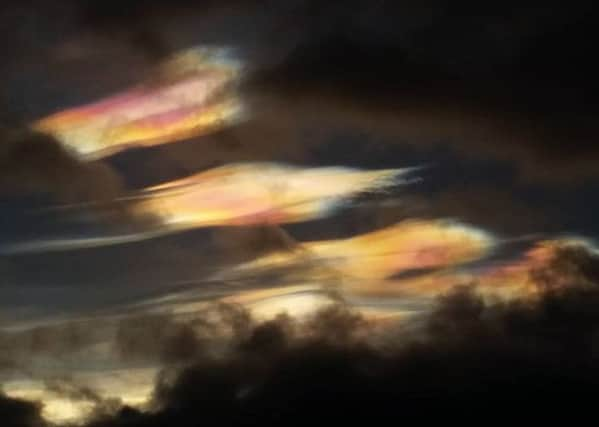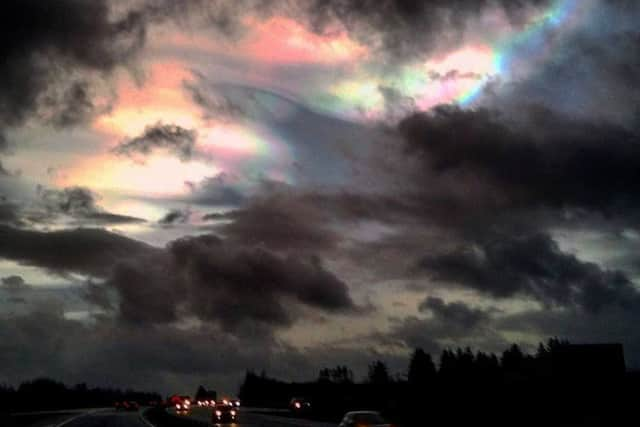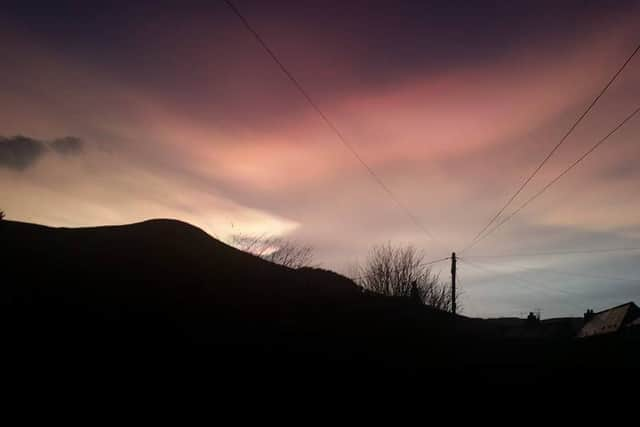Rare nacreous clouds create stunning scenes over Scotland


One picture, seen below, snapped by Matthew Rafferty and shared on the Scotland from the Roadside Facebook page, has been liked more than 12,000 times.
Due to their iridescent nature, nacreous clouds are commonly referred to as “mother of pearl” clouds. They are usually visible a few hours after sunset or before dawn and appear much brighter than other clouds around them.


Advertisement
Hide AdAdvertisement
Hide AdAccording to the Met Office, Nacreous clouds form in the lower stratosphere over polar regions when the sun is just below the horizon.
The clouds are illuminated from below and often glow in vivid colours and will often remain visible for a couple of hours after sunset and through the night as they are lit by moonlight.
Nacreous clouds form below -78 C temperatures and so are most likely to occur during the polar winter.
But there is a dark side to them as well - according to the Australian Antarctic division, nacreous clouds are a major contributing factor in the formation of ozone holes in the Arctic and Antarctic.


The sharp colours of the clouds are a result of their elevation, as they can commonly be found in the lower stratosphere between nine and 16 miles above the surface of the earth.
Nations in higher latitudes such as Scotland, Canada and Iceland are more likely to see these unusual clouds which are usually seen in conjunction with storms.
